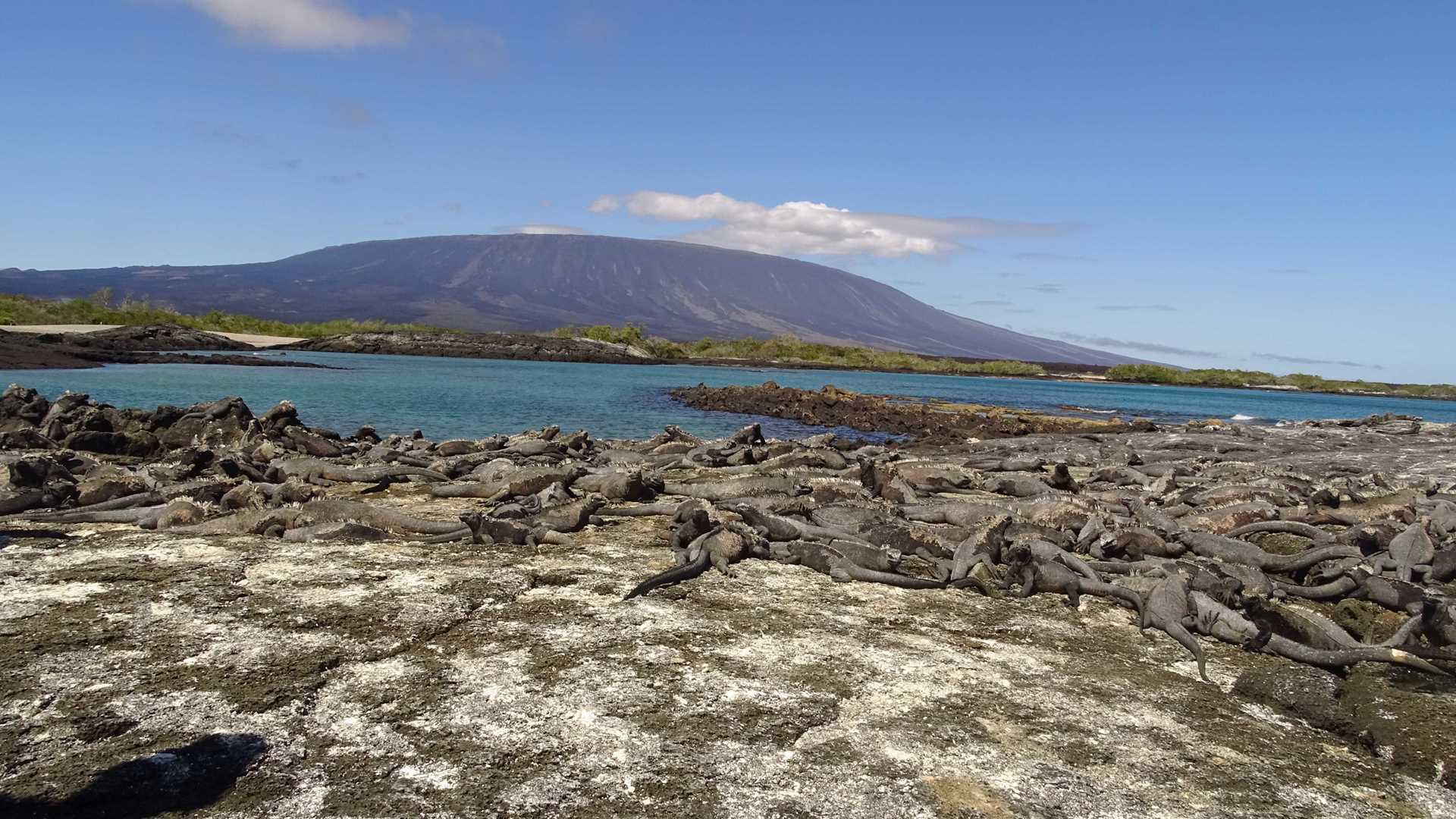Our day began early on the top deck of the National Geographic Endeavour II, searching for whales. The seas were quiet today and no whales were in sight, so we came down for breakfast and to prepare for our first landing of the day, on Punta Espinoza Fernandina.
There was a low tide this morning, which makes our landing much nicer, and also creates tide pools all along the shoreline, allowing us to see the intertidal life of the island. The island of Fernandina offers the perfect setting for marine iguanas to thrive, lots of shallow waters, irregular coasts and young, black lava flows. These marine reptiles use the lava to warm up before and after diving in the cold ocean, when looking for algae, their main food.
We disembarked and as soon as we start walking, we were surprised by marine iguanas suddenly appearing on the black lava flows—they blend in so well that we couldn’t distinguish them from the rocks until we got closer.
This year has been cold enough in the Galapagos, and it has been amazingly good for sea lions survival. There are several newborn babies here and there, little creatures next to their mothers, getting to know them. These sweet moments which always hypnotize visitors, moments of silence, absorbing this communion between mom and pup.
Along the walk, we saw ropy lava, made up of long, soft textures inviting photographers to use their skills to capture the beauty. We also saw several migratory bird species, as well as the colorful oyster catcher and the Galapagos hawk still looking for baby iguanas, which are not so small any more.
The walk was lovely and enjoyable, but eventually we had to head back to the shore because it was time for snorkeling. Each place tells a story above and below water. During our snorkeling excursion, we saw marine iguanas eating, as well as sea lions, turtles and many colorful tropical fish.
The afternoon was a relaxing one. Some members of the group jumped into the ocean from the stern and went for a swim, and later we went on a Zodiac ride. The name of this place is Punta Vicente Roca, the northernmost visitor site of Isabela. As soon as we came back, the National Geographic Endeavour II began navigating so we can celebrate the equator crossing—we were pleasantly surprised by an encounter with a blue whale!







